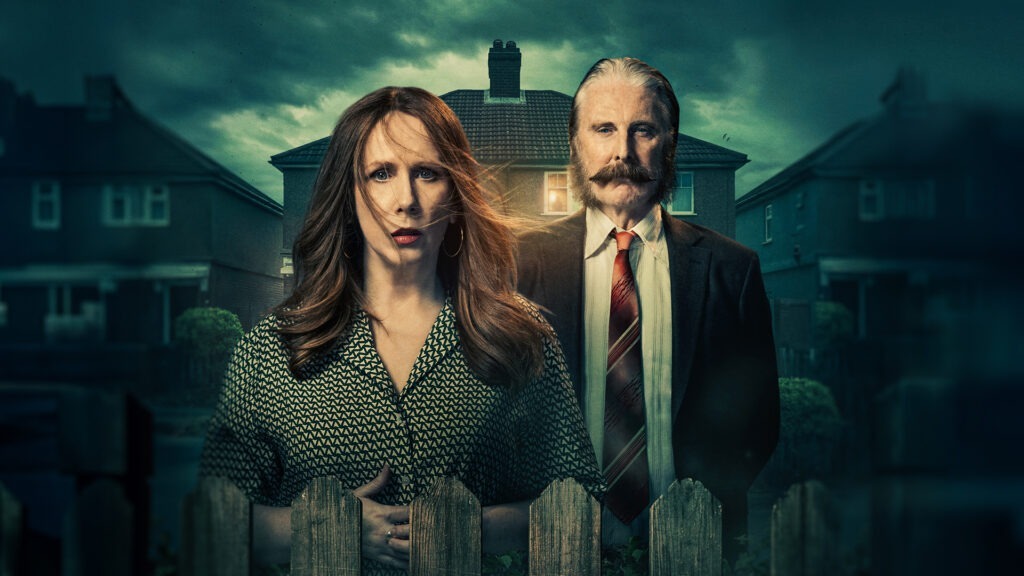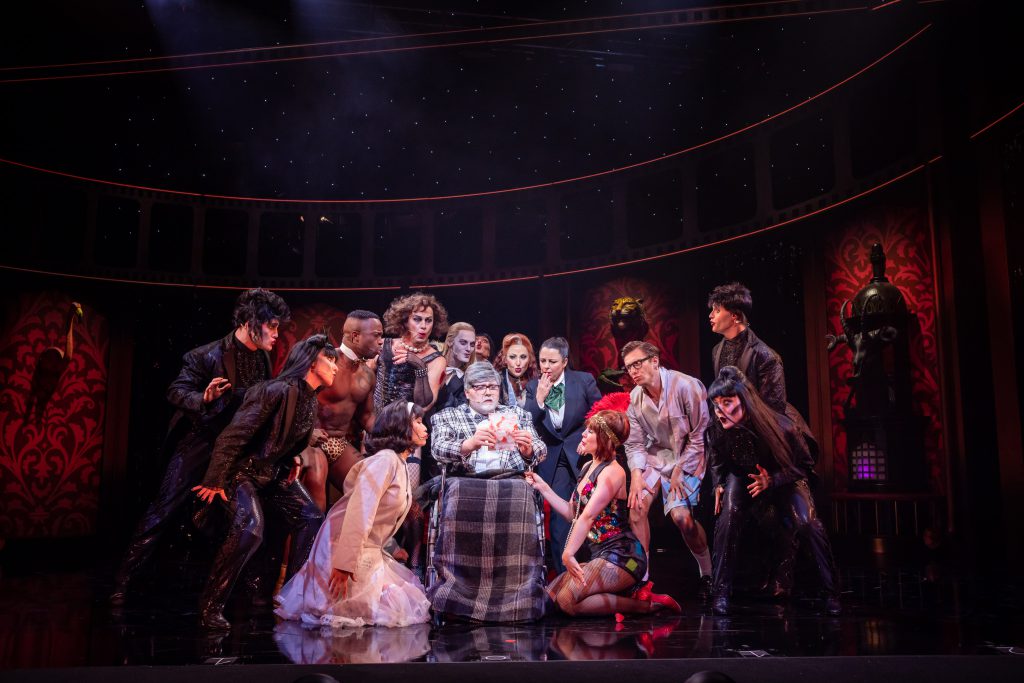
‘The Enfield Haunting’ // Ambassadors Theatre
‘The Enfield Haunting’ was spectral.
London’s West End Theatre District is world renowned. Much like New York’s Broadway, the West End is regarded as a premium centre for musical and dramatic theatre. Many classic productions began their life on the stages of the West End – ‘Les Miserables’, ‘Mamma Mia!’, and ‘Cats’ to name but a few. The West End is also heralded as the epicentre for British theatre – shows made by the British creatives, performed by British casts, designed for British audiences, and telling British stories. One of the West End’s latest offerings, ‘The Enfield Haunting’, while ticking the aforementioned boxes, falls heavily into the latter category. ‘The Enfield Haunting’ is a British ghost story with one particularly chilling detail – it is based on true events.
‘The Enfield Haunting’ is an intimate show staged deep within the heart of London’s West End at the Ambassadors Theatre. Small and unassuming, with a total capacity of 444 people, the theatre is well known for housing the long-running production of Agatha Christie’s ‘The Mousetrap’ for 21 years before it transferred to St Martin’s Theatre in 1974. Nowadays, the Ambassadors Theatre is quaint location, often housing smaller-scale productions of shows including ‘Little Shop of Horrors’ and ‘Stomp’. While the Ambassadors has staged a variety of shows in its 110 year history, its relation to British theatre is obvious, making it the perfect place to house ‘The Enfield Haunting’.
Inspired by true events, ‘The Enfield Haunting’ is the latest in a series of adaptations about one of England’s most infamous cases of supposed paranormal activity. Located in Brimsdown, Enfield, the council house home of the Hodgson family was allegedly inhabited by a poltergeist between 1977 and 1979. While the presence of the poltergeist was felt by the whole family, young teenage sisters Margaret and Janet were said to be the most affected. Metropolitan police of the time were contacted by their single mother Penny who claimed the girls were affected by such supernatural phenomenon as disembodied speaking, levitation, and telekinesis.
While the case drew enormous concern from the public at the time, it also drew a large amount of scepticism. The events have been dramatised on multiple occasions, with some of the most well-known adaptations including the BBC radioplay ‘The Enfield Poltergeist’ in 1978; BBC’s mockumentary ‘Ghostwatch’ in 1992; the horror series ‘The Enfield Haunting’ in 2015; and 2016’s ‘The Conjuring 2’.
It is important for productions that are based upon real historic events to feel authentic. The creative design of ‘The Enfield Haunting’ attempts to transfer audiences to the height of Callaghan’s Britain through its blue collar aesthetic. Upon entering the theatre, audiences are met with a substantial stage piece resembling the Hodgson family’s council house. Consisting of the two storey layout of many British homes, the set provides audiences a fourth-wall glimpse into the family home. A worn, drab kitchen-cum-dining room and lounge room sits vacant at the centre of the stage. A staircase adorned with fraying carpet is positioned to the right of the stage leading up to the confined territory of the Hodgson’s shared bedroom. Set Designer Lee Newby decorates his stage in neutral grey and beige hues, emphasising the simple lifestyle many working class English families endured during the late 1970s. Newby’s ability to encapsulate the living quarters, and standards, of the family in such a small space is a marvel. The inclusion of simple touches such as a running kitchen tap and an of the era soapbox television from Props Supervisor Fahmida Bakht only aid in transforming Newby’s vision. Audiences are likely to feel dually intrusive and included in the family by the set’s intimacy. Given the nature of the play, this conflicting attitude is perhaps warranted.
Akin to the staging of ‘The Enfield Haunting’, the trifecta of technical elements – lighting, sound, and costuming – all work to engross audiences in a feeling of legitimacy. In the case of the lighting, Neil Austin and Paul Kieve’s design provides a juxtaposing feeling of reality and paranoia. The mundane, standard lighting utilised during scenes of familial interaction demonstrates the perceived normalcy of the family unit. Juxtaposing this with more dim lighting and glitchy effects during moments of supernatural activity allows Austin and Kieve to contrast not just the family’s sense of reality, but the audience’s also.
The most stellar example of this is when Daniel Stuart’s malevolent poltergeist is illuminated. Draped in a striking pale green spotlight, his eerily silent presence is as chilling as it is captivating. These moments are further supported by Carolyn Downing’s unnerving sound design. While much of the atmosphere of ‘The Enfield Haunting’ is calmly quiet, Downing’s vicious screeching score during the eponymous haunting episodes provide a harrowingly tense atmosphere. It is the stark transitions from silence to bombastic noise that highlight just how jarring the lived experience of the Hodgson family had. It may only be a glimpse into the terror, but Downing, Kieve, and Austin all succeed in establishing it.
Newby lends his creative hand to not only the set, but to costuming as well. Newby, in collaboration with Costume Designer Joan Hughes and Wardrobe and Wig Manager Lisa Brindley, continues to highlight the Hodgson family’s blue collar roots throughout their clothes. From worn-out aprons to slightly ripped skirts and dirty knee-high socks, the stylistic wardrobe choices adeptly showcase a family who want to be valued as the same as others while not having the financial means to do so. As this was a common issue faced by many during the late 1970s in Great Britain, such designs feel authentic to not only the story being told, but to the society of the time also.
Bringing the plight of the Hodgson family to stage is no easy feat, yet the direction team consisting of Angus Jackson (Director), Robert Zuric (Assistant Director), Patrick Moloney (Production Manager), Rebecca James (Company Stage Manager), Olivia Roberts (Deputy Stage Manager) and Laura Cubitt (Movement Director) were all up for the challenge. Basing the play on alleged true events comes with a great sense of responsibility. The team aim to create a balance between the nuance of real life with the surreal ambiguity of the ghostly elements. Jackson in particular tries to toe the line between creditability and scepticism in his storytelling. The team endeavour to present a version of events that come straight from the alleged source. However, they also understand the importance of allowing the audience the autonomy to decide for themselves what they believe. In a story as bombastic as this one, the injection of subtly, even if only in a small dose, is appreciated.
The case of the Enfield Poltergeist is a famous one in London. Much like Jack the Ripper or Guy Fawkes, the story is one of legendary status in England’s capital city. Its infamous legacy as one of London’s prime ghost encounters has warranted it much attention from supernatural, history, and theatre lovers alike. The cast of ‘The Enfield Haunting’ are very much aware of the gravitas of the story they are telling. It is not only a snapshot into the lives of one British family, but of British society as a whole in the late 1970s.
Headlining the cast is Catherine Tate and David Threlfall. Tate, best known for her comedy and stint as Donna Noble on ‘Doctor Who’, is a presence onstage. With over three decades worth of experience in the entertainment industry, Tate demonstrates a high level of comfortability and prestige onstage. However, in the role of matriarch Peggy Hodgson, Tate feels somewhat miscast as she struggles to step away from her comedic roots and into the realm of horror imbued family drama. Tate’s chemistry with her fellow cast members is strong though, particularly with Threlfall.
Best known for originating the role of Frank Gallagher in the UK version of ‘Shameless’, Threlfall is intriguing as the mysterious Maurice Grosse. Instilling a quiet, curious energy into the paranormal investigator, Threlfall forms an integral nucleus for the band of characters to gravitate around.
Mo Sesay, Neve McIntosh, and Daniel Stuart portray the secondary characters of the Hodgson’s neighbour Rey, Grosse’s wife Betty, and the alleged poltergeist, respectively. While each of their presences onstage is brief, they showcase a collective ability to demand the attention of the audience. The same can be said of Jude Coward Nicoll who portrays the youngest of the Hodgson siblings, Jimmy. Coward Nicoll conveys a sense of naïve innocence in the role. His strong physicality demonstrates how integral body language and facial expressions can be to a role, sometimes even more so than dialogue.
Grace Molony and Ella Schrey-Yeats as Hodgson sisters Margaret and Janet are the definitive standouts, however. As the rebellious Margaret, Molony’s infectious energy is both energising and irritating in the perfect way. Her interplay with the quieter Jimmy and Grosse provide some of the show’s best laughs. Contrastingly, Schrey-Yeats’ portrayal of the supernaturally-tortured Janet is (for lack of a better word) haunting. Transitioning from docile and shy to violent and chaotic in only a matter of beats, Schrey-Yeats captivates audiences in every scene she features. Her scenes of ‘possession’ are genuinely frightening and can feel all too real at times. Such scenes are sure to ‘haunt’ audiences long after they have left the theatre.
Inspired by the infamous case of the purported London poltergeist of 1977-79, ‘The Enfield Haunting’ is an intriguing production. The play’s basis on supposed true events allows for audiences to engage in one of the city’s most contentious chapters in its history. While the real life case as its fair share of defenders and sceptics, the production encourages audiences to decide for themselves, instead aiming to create an atmosphere of authenticity. At its heart, ‘The Enfield Haunting’ is a story for, about, and by British society. With elements of the supernatural, historic, and cultural analysis, the show is guaranteed to have a wide reach. Whether you come out of the West End’s Ambassadors Theatre a believer or not, one thing is for sure – memories of the show will haunt you long after the curtain falls.
‘The Enfield Haunting’ performs at the Ambassador Theatre on London’s West End until Saturday, 2 March. For more information, or to purchase tickets, visit the Ambassador Theatre’s website.






